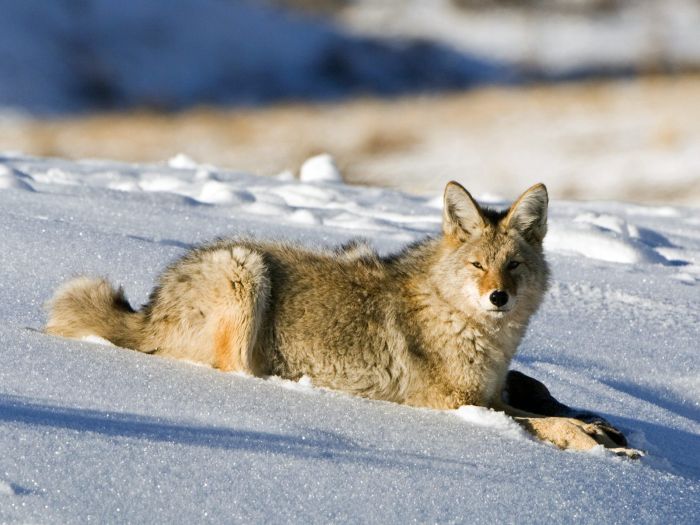|
|
Gray Wolf
|
The North American recolonisation likely occurred in several waves, with the most distinctive populations occurring in the periphery of the range. These populations (C. l. arctos on the high arctic islands, C. l. lycaon in the eastern forests, C. l. baileyi in the far south and C. l. rufus at the continental corner opposite the point of invasion) may represent survivors of early migrations from Eurasia. C. l. baileyi, C. l. lycaon and C. l. rufus display some primitive traits and systematic affinity to one another. Fossil remains from the late Pleistocene of large bodied wolves similar to C. l. arctos and C. l. albus occur in coastal southern California, indicating that large North American gray wolf subspecies were once widespread, and may have been driven southward by glaciation, though wolves no longer reside there. Fossils of small bodied wolves similar to C. l. baileyi have been found in a range encompassing Kansas and southern California. This indicates a late Pleistocene population flux, in which large, Arctic forms of wolf moved farther south, with smaller, warmth adapted wolves expanding as the climate moderated.
The now extinct Japanese wolves were descended from large Siberian wolves which colonised the Korean Peninsula and Japan, before it separated from mainland Asia, 20,000 years ago during the Pleistocene. During the Holocene, the Tsugaru Strait widened and isolated Honshu from Hokkaidō, thus causing climactic changes leading to the extinction of most large bodied ungulates inhabiting the archipelago. Japanese wolves likely underwent a process of island dwarfism 7,000–13,000 years ago in response to these climatological and ecological pressures. C. l. hattai (formerly native to Hokkaidō) was significantly larger than it southern cousin C. l. hodophilax, as it inhabited higher elevations and had access to larger prey, as well as a continuing genetic interaction with dispersing wolves from Siberia.
• Subspecies
In 2005, 39 subspecies of gray wolf were recognised, including the red wolf and two subspecies of domestic dog, Canis lupus dingo and Canis lupus familiaris. Wolf subspecies are divided into two categories:
|
|









